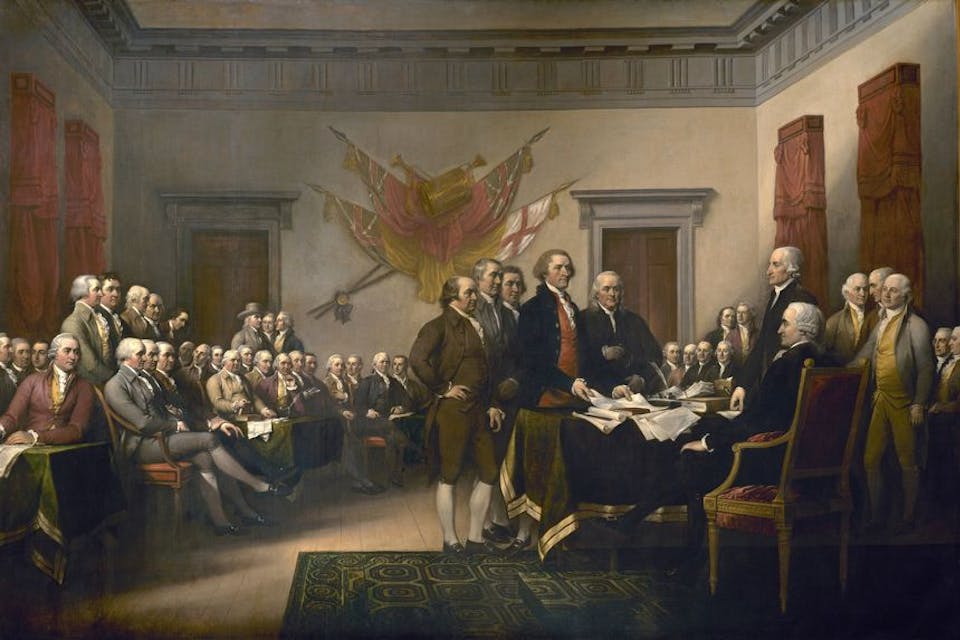
July 3, 2021
Painting the Tension at America’s Founding Moment
By Rabbi Meir SoloveichikThomas Jefferson and John Adams represent two different poles of the American creed.
The most famous image of America’s founding, John Trumbull’s painting “Declaration of Independence,” does not depict the events of July 4, 1776. Rather, it portrays a scene that took place on June 28, when Thomas Jefferson, John Adams, Benjamin Franklin, Robert Livingston and Roger Sherman presented the Declaration to the Continental Congress. Trumbull, who began his career as an artist after serving as an aide-de-camp to George Washington in the Continental Army, made his first small painting of this scene in the 1790s. In 1818 he completed a larger version, which several years later was placed in the Capitol, where it still hangs today.
John Adams, one of the few surviving founders, was wary of the project. The story of the Revolution, he wrote to Trumbull, was a complex layering of events and individuals. To reduce it to a single scene was dishonest: “Let not our Posterity be deluded by fictions under pretense of poetical or graphical Licenses.”
Thomas Jefferson, on the other hand, embraced Trumbull’s use of artistic license; without it, he wrote, “the talent of imagination would be banished from the art.” In fact, as the art historian Paul Stiati has written, the original painting had been Jefferson’s suggestion, which helps to explain why Trumbull made the author of the Declaration stand out, resplendent in a red vest and grasping the document in his hands. At first glance, “Declaration of Independence” seems to celebrate Jefferson as the author of America itself.